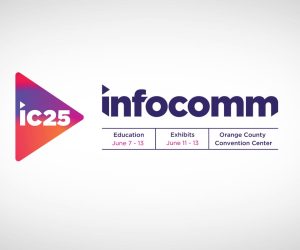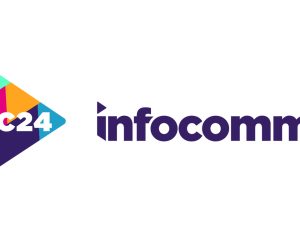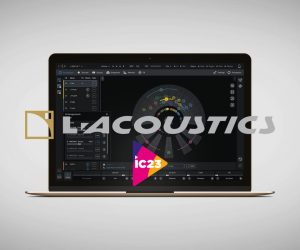InfoComm 100: Adapt or Perish
The international industry thinktank focusses on the convergence of AV and IT.
Text:/ Paul van der Ent
Last August my email went off with an invitation from Randal A. Lemke, Ph.D. Executive Director and CEO, InfoComm International and Tom Stimson CTS, Chairman, InfoComm Leadership Development Committee and President of The Stimson Group, inviting me to, “Join the 2011 Class of the InfoComm 100 and to attend a two-day event on one of the most pressing issues in the audiovisual industry – the convergence of AV systems with IT networks. You will join a prestigious group comprised of 100 executives representing the entire AV value chain worldwide, as well as information technology leaders in corporate, education, government and other sectors”. Feeling just a little bit chuffed, I accepted without hesitation. [And he really needed the frequent flyer points – Ed]
As befits an important audiovisual industry event, the stage in the ballroom of the Portland, Oregon, Marriott was set with an impressive rear projected backdrop screen that spanned the entire room. Tom Stimpson opened the event by challenging us to, “Think, evaluate, and to plan for the future of the Professional Audiovisual Industry”.
Tom was followed by Randy Lemke ED & CEO of InfoComm, who reiterated the message of his Integrate 2011 keynote presentation on the transition to ‘Netcentric AV’. He encouraged us to: “think of IT first as your customer”, pointing out that Enterprise IT and the IT value added reseller (VAR) would start to show up in the AV market as a service provider. Lemke warned that we as AV people need to be prepared to take advantage of this market change.
TOO BUSY TO BE STRATEGIC?
The Day One keynote speaker was Daniel Burrus, author of Flash Foresight, and a leading industry technology strategist who has spoken in Australia many times. His lecture was geared to immediately open our minds to the possibilities of the conference, and he practically scolded everyone in the room for “being too busy to be truly strategic”. He wanted us to see that the problem you may think you need to solve today for your business is not really the problem at all. You may actually be fixing the symptoms of the problem without addressing the problem itself.
He looked at the process of distinguishing trends: the ability to see the difference between a hard trend – one that is tangible, fully predictable and linear – versus a soft trend that is really not guaranteed to happen, and may be cyclical. We were encouraged to schedule an hour every week to investigate future trends. He made the point that ‘bad change’ is simply one you didn’t see coming. The key is to spot the trends in the industry (such as AV/IT convergence) and revise your business model before it’s too late.
TECH FUTURES: GOOGLE V AMX?
In the following session on Future AV and IT Technology Trends, Mark Valenti, president and CEO of The Sextant Group took us on a journey through past innovations, looking at disruptive technologies such as today’s iPad. He emphasised that these technologies form the basis of the user experience, and people will expect to use these technologies in work and home applications. He pointed out that internet video has now been part of life for several years, and TV over the network is expected to become a regular occurrence.
Valenti indicated that interactive video is expected to be a popular trend in the second half of this decade, although we haven’t yet begun to see its impact, or worked out what it’s going to mean. He warned us that we need to become familiar with technologies such as Wi-MAX, 4G, WHDI, mesh networks and personal broadband. He also made one of the more controversial statements at the conference when he warned that our reliance on proprietary control is about to go: “Sorry, Crestron and AMX, but your days are numbered. It just doesn’t make sense today.”
Andrew Milne, CEO of Tidebreak, Inc., the other presenter in this session, began by pointing to the changes already seen within our industry, the Cisco-Tandberg pairing and the partnership between HP and Polycom, as signs of directional change in this industry. He predicts we will see more products that intrude on the things we’ve traditionally thought of as AV. He commented that Google founder Larry Page is hardly afraid of taking on the might of Crestron or AMX.
Milne concluded by pointing out that the solutions we’re providing are not just about hardware and software. They include the people, the processes and the coaching services: being able to help people find out what to do with all this technology, and helping to establish the ROI. This must become the complete solution, delivered in a 100% finished state.
TRUST YOUR CLIENT
Kicking off Day Two was keynote presenter David Nour, CEO of the Nour Group, Inc., whose presentation Adaptive Innovation – Adaptable Business Models for Changing Market Demands, focussed on the basics of relationship building. This echoed some of the previous day’s presentations but concentrated on understanding our clients and their businesses. His presentation covered topics as diverse as social media and cloud computing, but boiled down to a single recurring question: “Why is it in every other culture in the world, we build relationships before we enter into business with a person or company, but in the US, if and only if we enter into business and it is successful, do we decide to build a relationship?” I thought these were powerful words, as we have the same issues here in this part of the world. We too, need to lift our game and have trust between us and the customer.
The informal chat after this session and on the previous day with other attendees – some of whom were end users and consultants – showed me that these problems are indeed global. As Mark Valenti later put it in his blog, “If we don’t understand our client’s business, we won’t earn the trust needed for a collaborative relationship”. If we don’t all work to change this perception, how are we ever going to get into a project in the early stages and be considered as part of the original design?
IT: EMBRACE THE BEAST
Kit Lisle and Julia Baillie from Acclaro Growth Partners presented the next session. These guys have been responsible for a number of the surveys undertaken by InfoComm since 2004. Drawing on this research we were told that IT believes the convergence with AV is taking place at a faster rate than most AV professionals are prepared to believe. It looks at AV and says we should think of ourselves as part of the IT industry, and as we can’t escape this, we must embrace it. One of the biggest impacts of this convergence is that AV is following in the footsteps of IT in becoming a commodity where hardware margins are now in the low single digits. The silence throughout the whole room was palpable.
To compensate for these low product margins companies need to make a blended margin. Like the IT sector our labour rates need to rise to meet the cost of the education, training, qualifications and standards we will need to have to deal with convergence.
Their research indicates that by 2016 AV and IT will be fully converged, and that both industries would become critical components of a smart building industry. It is expected to see further convergence between AV, IT, security, acoustics, lighting, HVAC systems, communications and structured cabling. They also identified that AV design is becoming more of a commodity, and design consultants will have to add high value services to increase margins and revenue in this new converged era. They also saw the AV design consultant as being ahead of the AV integrator in accepting convergence, a statement that provoked some heated comment.
COMPETITION OR COOPERATION?
Dale Johnson from Technology Assurance Group led us through the next session: Cooperate, Compete, Coordinate. As an example of how AV/IT convergence might take place, Johnson referred us to the data and voice communication industries converging over the structured cabling system, and voice becoming software based. While he admitted that AV was a lot harder to converge than data and voice, he said we basically have three choices: Cooperate/partner with IT; compete by scaling up our AV businesses to have IT as part of our services offering; or coordinate between AV and IT providers. There is a fourth alternative, and that is do nothing, but as Johnson put it, “Inaction often brings unintended results”. He spoke about these alternatives in depth but came to the conclusion that subcontracting – either AV to others or others under AV – was not a workable solution.
The final session was a Q&A panel of three business consultants: Tom Stimpson from the Stimpson Group, Kit Lisle from Acclaro Growth Partners and Bill Sharer from Exxel Management and Marketing. They reaffirmed a number of often-repeated statements from all these discussions which I’ve summarised in a sidebar.
TAKE HOME MESSAGE
I left the conference feeling cautiously upbeat. My networking was intense, and there was a lot of discussion out in the foyers and at dinners and lunches about convergence, contracting, builders, construction, design and construct, and tender bidding. I spoke with a wide variety of AV industry participants, people from large universities, a specialised programming company employing over 40 programmers, and business owners from South Africa, the Middle East, India, UK, and USA and Canada. The one thing I learnt was that we all have the same issues. We may not entirely agree about the loss of true AV knowledge that the forthcoming convergence may bring, but we all agreed that we need to get ready for it, because like it or not, it is happening now.
As Daniel Burrus said in his keynote, “The future is changing”. Connection, communication, collaboration and engagement are all being redefined right now, and we, the AV Industry, need to be at the forefront of this process. It just might be time for Australia to have its own AV summit.
“”
...the problem you may think you need to solve today for your business is not really the problem at all
EXECUTIVE SUMMARY
The convergence of AV with IT is a fact we ignore at our peril.
The key to survival is innovation – spot the trends and know how to understand them.
The problem you think you need to solve today for your business probably isn’t really the problem at all.
Embrace standards and best practices and keep expanding the skills of your people.
Accept that hardware margins will continue to fall and that the labour component will become more important to our success and our profitability.
Building Information Modelling and 3D will remain prominent parts of AV integrators’ lives.
This is the first era in human history in which four distinct generations are in the workforce together. Include the younger members of your team in helping your business through the development process.
We must take great care to supply what the customer actually wants.
Learn your customer’s business inside and out.
It would be a big mistake for anyone to view current economic trends as part of a cycle.
Many AV integrators lack the sales acumen to properly accept, deliver, and sell real innovative solutions or strategies.















RESPONSES